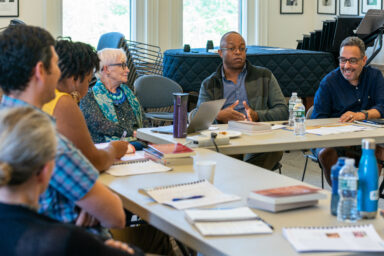Issues Brief Series #4 Summer 2004, Published by the John S. and James L. Knight Foundation
by Alan Brown
Two observations from recent studies illustrate the paradox of latent demand for live orchestra concerts. Results of a national survey of U.S. adults conducted in 2001 by the John S. and James L. Knight Foundation suggest that half of the people who most enjoy going to classical music concerts do not act on their interest. In other words, their positive attitudes about concert going do not translate into regular attendance. What’s keeping so many classical music lovers at home?
The same study tells us, ironically, that some of the people who do attend orchestra concerts actually have negative attitudes about concert going. That some people in the audience are less than enthralled with the concert experience is old news. But how did they get there in the first place? What got them out of the house?
From opposite ends of the same continuum, both of these observations point to the presence of some other motivating factor that drives or impedes attendance – namely social context.
What Research Says
A mounting body of research suggests that who invites you to a concert has as much to do with your decision to attend as other factors such as the program, guest artists, etc. Indeed, the vagaries of social context cast a long shadow on demand for arts programs.
If you work with an orchestra, this means many of your potential attendees are sitting at home waiting for a friend to phone or e-mail with an invitation. They have a positive attitude about attending your concerts. But no matter how many brochures you send, it’s unlikely they’ll ever act on their interests without an external stimulus – an invitation from a friend or family member. They are “Responders.”
A smaller group of consumers is likely to do the inviting, research suggests. These “Initiators” – think of them as Type A cultural consumers – are the glue that holds together your audience. They do something instinctively that marketers in other sectors spend millions of dollars cajoling customers to do: recommend a product to friends.
As orchestras and other arts organizations struggle to attract audiences in an increasingly difficult marketing environment, this simple idea – that some people, quite naturally, are Initiators while others are Responders – offers hope for reinvigorating a marketing system in need of conceptual repair.
This Essay
This essay analyzes the deep veins of social context surrounding arts attendance and sounds a clarion call for experimentation and investment in new marketing relationships. The first section describes the two customer typologies, drawing on Knight Foundation research and other recent studies. The second section discusses the connection between social context and personal selling. Examples illustrate how some orchestras use social opportunities to enhance the concert-going experience and attract new audiences. A final section imagines a new marketing paradigm based on Initiators and Responders.



